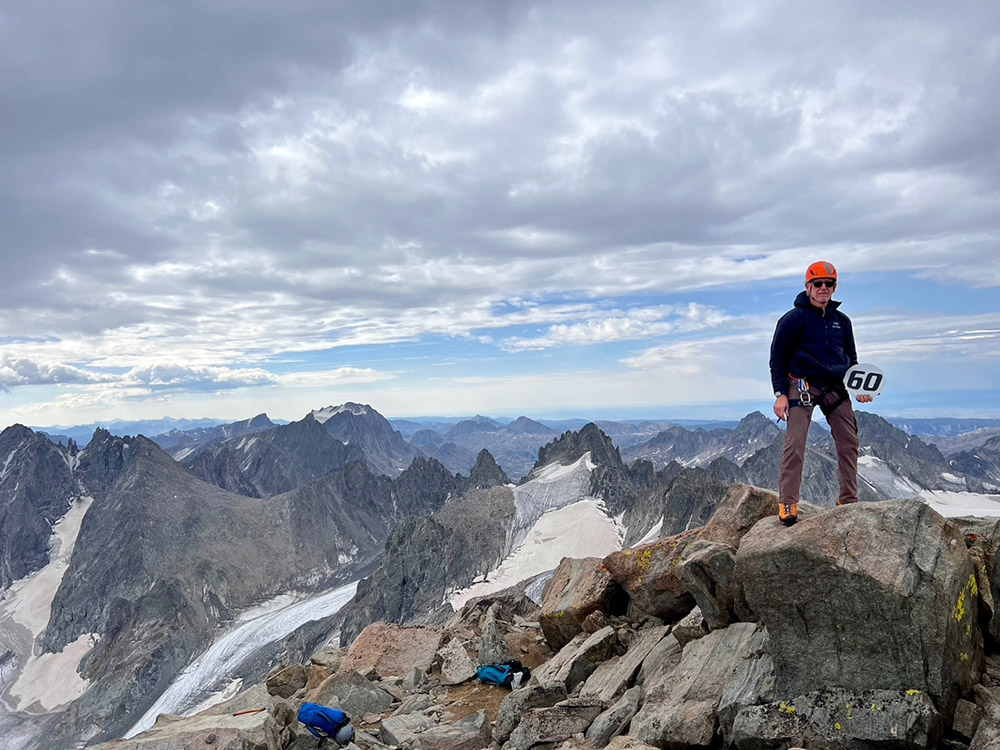In 2013, work friends invited my wife and me on a Tuscany biking (really wine-drinking) trip. I didn’t and still don’t care for road biking—Tuscany excepted—but I needed to get in biking shape. So I started mountain biking. In the subsequent four years, our group went on three more trips: Machu Picchu via Salkantay, the Dolomites hiking and biking, and a Canmore/Banff birthday bash. The more time I spent in the mountains, the more I wanted to be up there. I’m a retired electrical engineer living in Elizabethtown, Kentucky—we only have hills here—but I decided mountaineering was a sport I wanted to pursue.
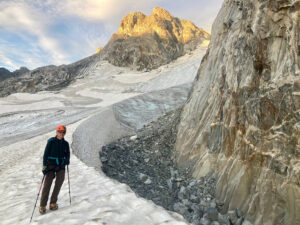
As a kid, I’d lived in Clovis, California, in the Central Valley close to the Sierras, and my family and I took weekend trips to the mountains car-camping, boating, and waterskiing on the lakes, hiking, and cutting loads of firewood; we also made quite a few trips to Yosemite. We hiked man of the main trails in Yosemite including Half Dome and Cloud’s Rest, but I never climbed a big mountain.
In 2017, I tagged my first Fourteener, Quandary Peak (14,271 feet) near Breckenridge, Colorado. I still remember the sign at the trailhead: “There are no easy Fourteeners.” The view from the top of Quandary where you could see so far in every direction—and the fact that you had to “earn” it—was totally addictive.
In 2018, I got the notion to climb the Matterhorn. Western Europe is an area I love to travel to, and the Matterhorn’s chiseled shape just screams, “Try to climb me!” That started an interesting family discussion revolving around “Why?” My best answer was that I was 56 years old already and wasn’t going to wait until I was 70 and then say, “You know, I wish I had done …”
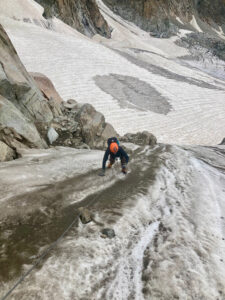
But where to start? How to build the experience and fitness? I researched training for mountain climbing. My web surfing led me to Training for the New Alpinism, and I read and adopted some of the book’s precepts. Since I pursued a self-coached agenda at first, most of my “training” involved running my local hill, which I call “Charlie Hill” since it’s on my neighbor Charlie’s property. The hill only gets me about 130 vert, but it’s steep and rocky. Over the years, I’ve run Charlie Hill thousands of times, in all sorts of weather, and it can be a bear on the hottest and coldest days. I never wear headphones, so I can stay focused on the terrain. I’m much more likely to take a tumble if my mind wanders from where I’m placing my feet. On my worst fall, I badly dislocated my middle finger (totally sideways) and couldn’t even hang on a pull-up bar for two months.
My research also led me to Exum Mountain Guides in Jackson, Wyoming. In 2019, I made a guided climb of the Grand Teton with my brother; I consider this my first real climb. As before with Quandary, on the Grand’s summit I felt like I was on top of the world, if only for 10 minutes. I don’t need to climb an 8,000-meter peak or even reach the high point of a continent to get the high I’m looking for; I just need to earn a challenging summit every now and then.
My goal for 2022 was a traverse of the high peaks in and around Titcomb Basin, deep in the Wind River Range, Wyoming. I’d first heard about the basin from my brother, who’d read about it online. I started digging around. I wanted a tough test, and had set my sights on Gannett Peak (13,810 feet), Wyoming’s high point. Add in that one side of Titcomb is flanked with Thirteeners, the stunning pictures (esp. Island Lake) all over the internet, and my previous taste of the Winds down in the Cirque of the Towers on guided climbs of Pingora and Wolf’s Head, and I wanted to experience Titcomb Basin from its craggy heights.
I knew this trip would be harder than previous excursions. There would be more days, a long approach carrying a heavy pack, more elevation gained and lost, the goal of three Thirteeners, including Gannett, and some mixed climbing, etc. I’m pretty sure that Evan Miller, my guide for the trip (via Exum), thought I was being overly ambitious—and I’m also pretty sure he’d seen it before.
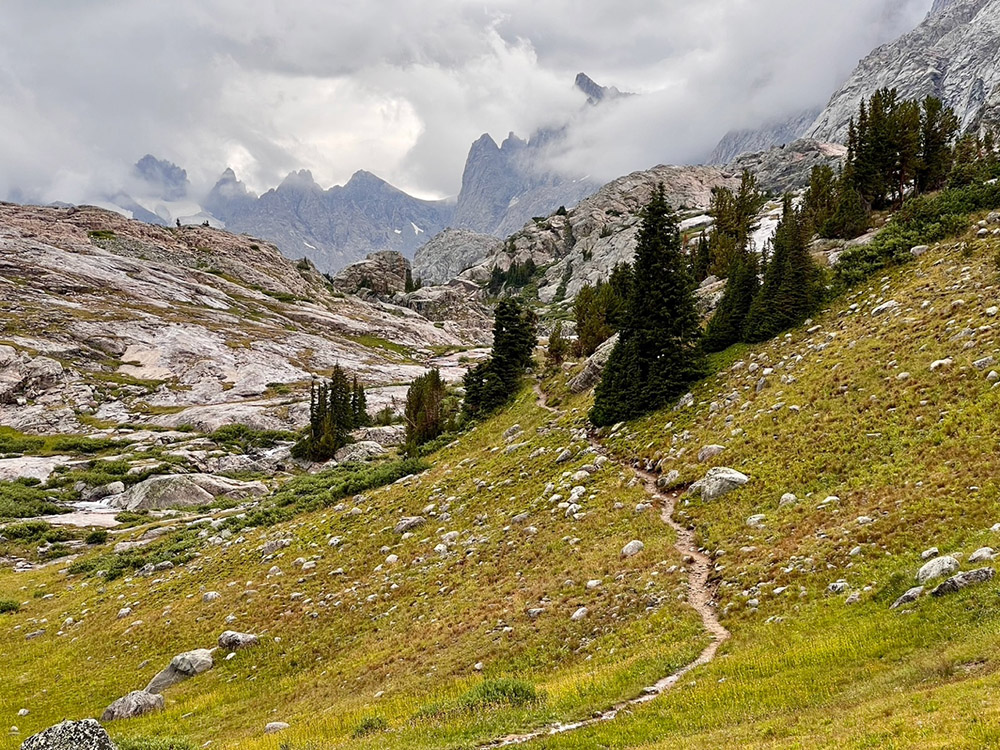
The one thing I can almost completely control before an adventure is fitness. For at least two years, I’ve been a regular on the Uphill Athlete (UA) website, reading many of the articles. I learned about training with gradual increases, modulation, and consolidation. I pondered their different training offerings, but wondered if I was in the target demographic—I’m not chasing the Seven Summits nor trying to set records anywhere. After a May 2022 inquiry and an encouraging response, I joined the Mountaineering Training Group, self-selecting the intermediate level. This training would finish about two weeks before my trip to Titcomb Basin—perfect!
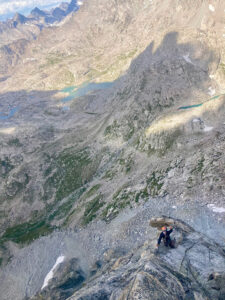
I knew from the start that I wouldn’t be completely following the UA playbook. I’m a fan of Apple Fitness+, and over the past two years I have cherry-picked strength, HIIT, core, and yoga workouts that I find motivating and that also target the right areas. My intent was to work those in with the endurance elements of the UA training plan. I stayed mostly compliant with this modified plan, except near the end when the Southeast’s summer heat and humidity “motivated” me to shorten some of the longest workouts from 2.5 or 3.5 hours down to 2 or so. I spent lots more time on Charlie Hill but with a more deliberate plan of attack, and added another shorter but steeper hill for muscular-endurance workouts and a hilly six-mile road course for building my aerobic base.
During the course, UA provided the workouts and the structure, but you were really only accountable to yourself. Nonetheless, if you took the initiative to fully engage, the feedback was invaluable. The real epiphany came when I took to heart the UA coaches’ insistence on managing aerobic workouts to stay below my aerobic threshold (AeT). Soon, my endurance workouts no longer felt like sufferfests! Also I don’t like to quit anything I start, so there was added motivation to go hard. By the end of my training, I felt much fitter, much better educated on how to train, and more disciplined.
Thanks in part to all my structured training, our eight-day excursion into Titcomb Basin went off without a hitch. Evan and I stayed above 10,000 feet for the duration, logged almost 20,000 feet of vertical gain, and covered 60-plus miles of terrain. We summited all three Thirteeners I’d wanted to climb—Gannett via Bonney Pass, Sacagawea, and Harrower—in five days, relocating camp in between. I definitely felt the efforts, but they were not exhausting. I had time and energy to enjoy the surroundings, focus on technique, and simply savor the climbing. This trip was also my sixtieth-birthday present to myself, which made it extra special.
Evan and I finished each big day a couple of hours quicker than expected, and toward the end of the trip, Evan said, “We crushed it.” He also told me that I was more than fit enough for the bigger climbs that he regularly guides—peaks like Denali and Aconcagua—though I’m not sure those mountains are on my radar.
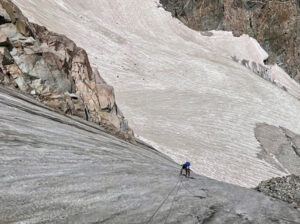
When I left for Wyoming, the Training Peaks app we all used to track progress had my Chronic Training Load (CTL; i.e., fitness) in the low 70s; when I got back and loaded all my days from the trip (recorded with my Apple Watch), it had me at 105. Of course it also had Acute Training Load (ATL; i.e., fatigue), through the roof, but I felt really good.
I haven’t decided what’s next. I’m kicking around either something challenging in the Cascades or the Matterhorn. I have mixed feelings about climbing what I know will be an overcrowded “tourist trap,” even if the tourists I’ll be close to are climbers. (I know: I’ll be a tourist also!) But … since that mountain started his whole process, maybe it’s time to check that box and get a taste of Alps climbing culture, assuming the weather and the mountains cooperate. After my time in the mountains, I never take these things for granted.
For any who are interested, here’s a day-by-day breakdown of our trip into Titcomb Basin, Wyoming:
Day 1: Hike to Island Lake and set up camp. About one hour of the hike spent in a vigorous thunderstorm—multiple lightning strikes within one mile.
Day 2: Relocate camp to the top of Bonney Pass with thunder in the distance. Stopped for about an hour to contemplate whether we really wanted to be up there in a storm. We decided to proceed and lucked out.
Day 3: Gannett climb plus a little diversion to the top of Gooseneck Pinnacle; return to Bonney Camp.
Day 4: Relocate camp to Mistake Lake. Kind of a recovery day except for the major talus-hopping down Bonney with a heavy-ish pack.
Day 5: Sacagawea climb.
Day 6: Relocate camp to Indian Basin. Recovery day.
Day 7: Harrower climb with 40–60 mph winds. More thunder in the distance as we neared the summit. We topped out and got farther down quickly.
Day 8: Hike back to Pole Creek trailhead. Still had cold beer in the cooler!

